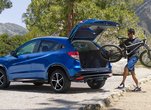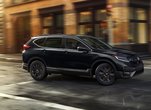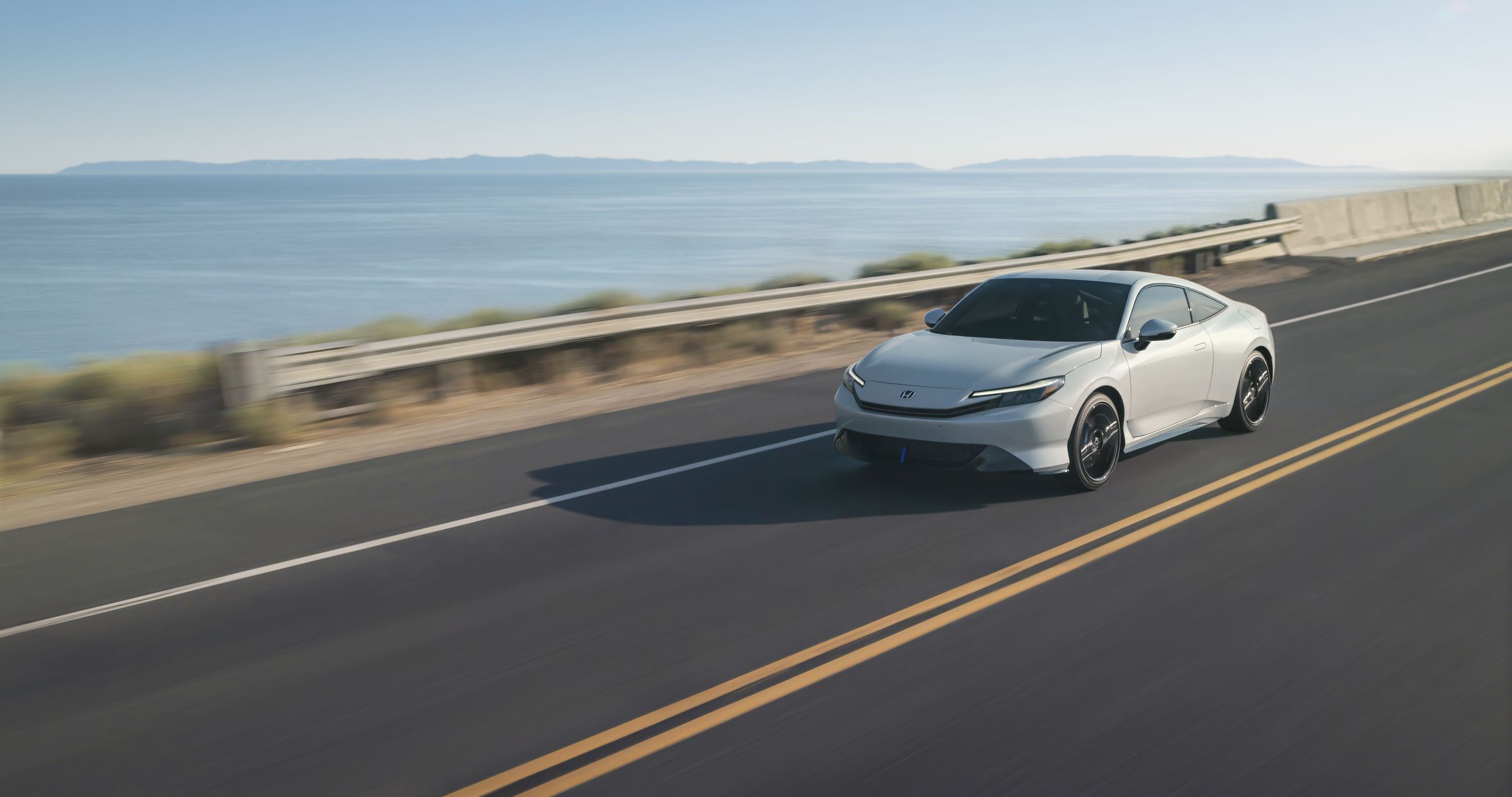What's The Difference Between Honda's Four SUVs? HR-V, CR-V, Passport, And Pilot
August 31 2021, Centennial Honda
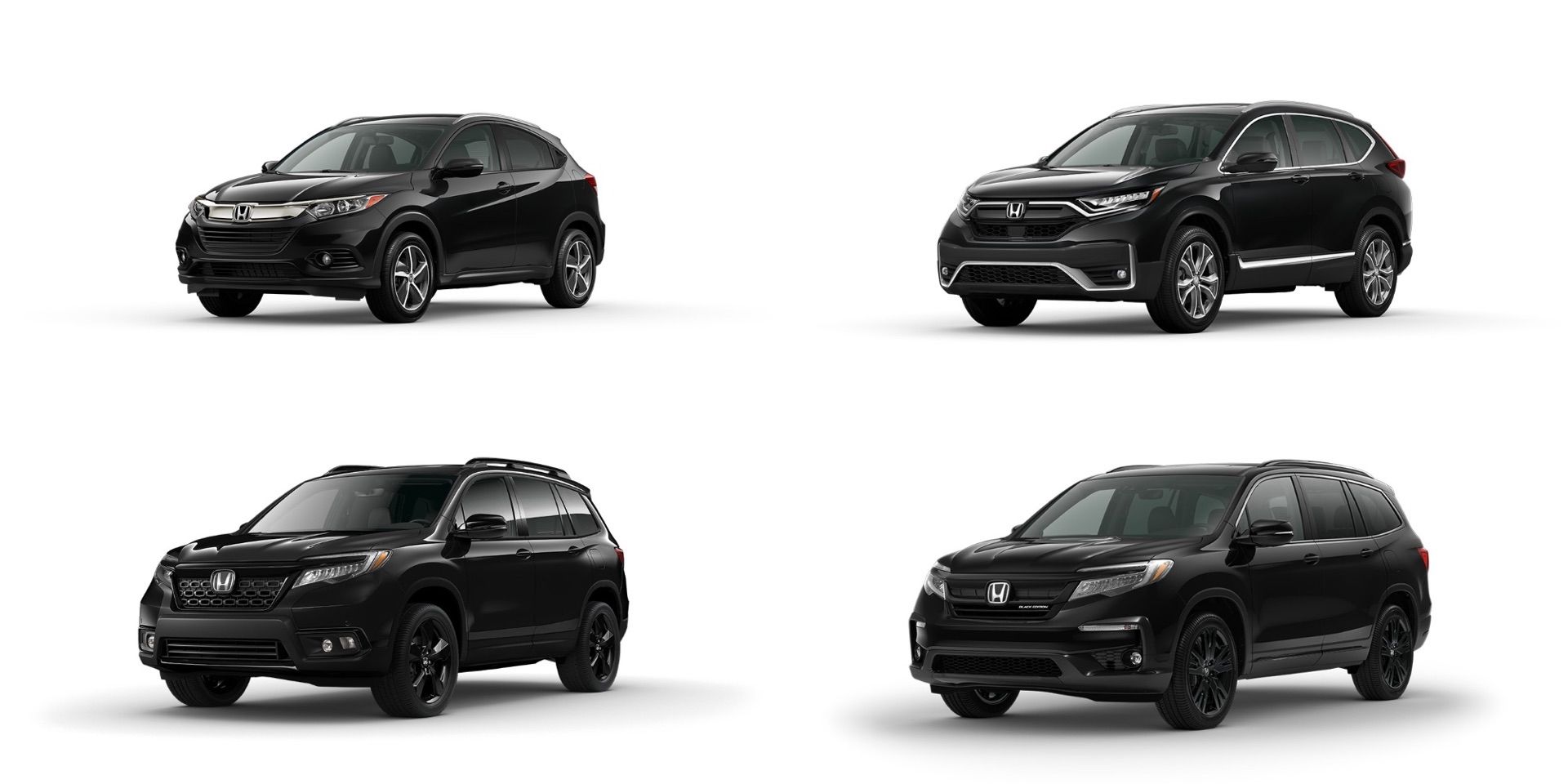
Sport-utility vehicles, crossovers, SUVs, CUVs: no matter what you call them, Honda sells a lot of them. In fact, the Canadian-built Honda CR-V is routinely PEI's top-selling utility vehicle.
The CR-V joined the Honda lineup in 1997. Now in its fifth generation, the CR-V is the best-selling Honda in Canada and across the North American continent. In 2002, Honda doubled the size of its SUV lineup by introducing the 2003 Pilot, a three-row SUV. The Pilot is now in its third generation and is offered in five different trim levels; six if you count different configurations of the Touring model.
With the large Pilot on one end, Honda book-ended the CR-V by introducing a smaller crossover in 2015. It's called the HR-V, a name Honda had used in global markets more than a decade earlier. With a brilliantly flexible cabin, the HR-V was an instant hit.
Honda's fourth SUV is the Passport, launched in early 2019. Again, this is a familiar name for Honda fans – an earlier Passport was the fruit of a Honda/Isuzu relationship between 1993 and 2002. The Passport will be familiar to Pilot owners – they share a platform and powertrain – but its smaller two-row body allows for a sportier driving experience.
That's the story behind Honda's four utility vehicles, but what's the best way to describe the differences? Let's look at the cold hard facts.
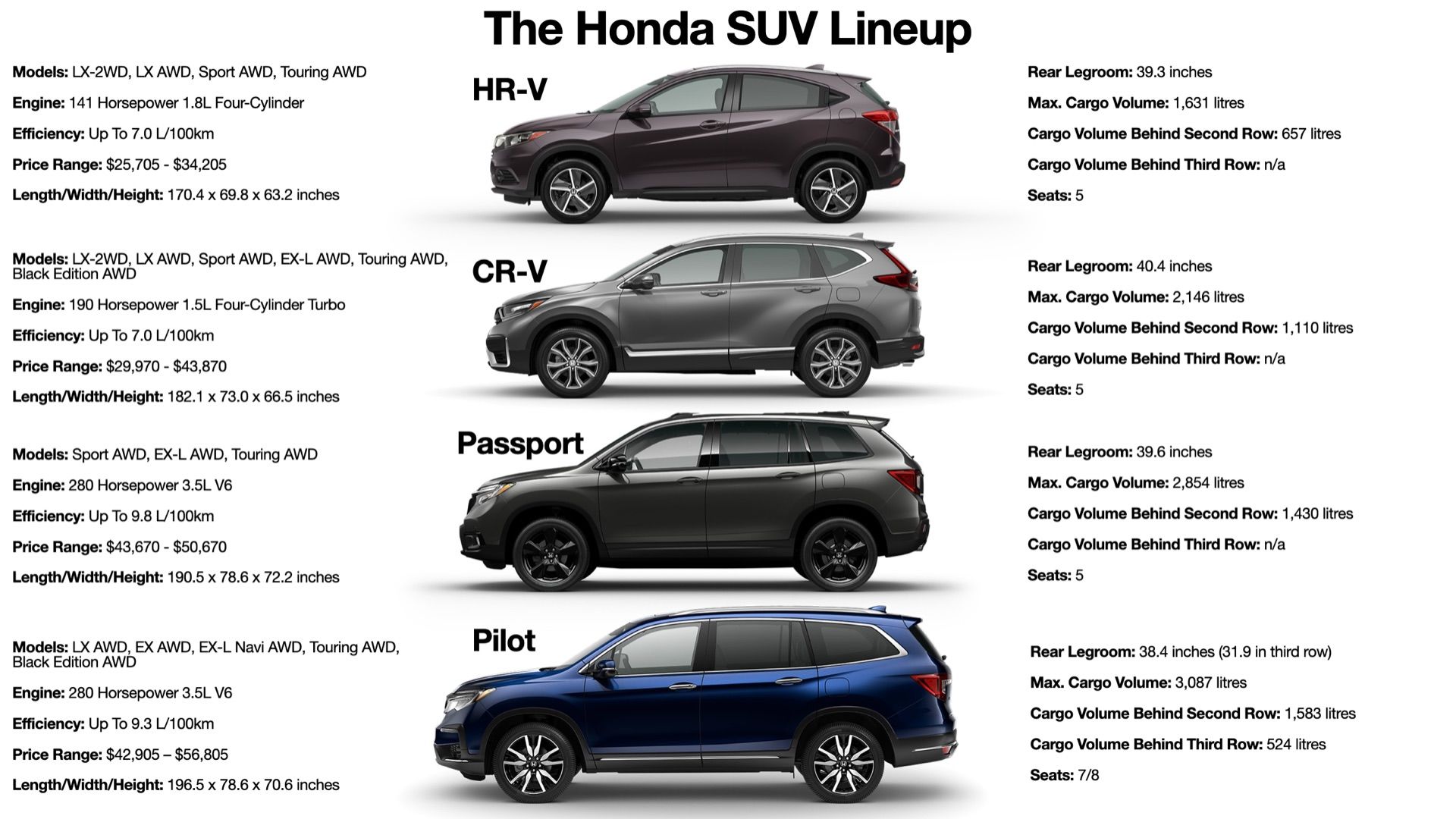
Honda's two smaller utility vehicles are powered by four-cylinder engines. In the CR-V's instance, it's turbocharged. The two bigger Honda SUVs are both powered by a 280-horsepower V6 engines. Engines are at the heart of every Honda – we're talking about the biggest manufacturer of engines in the world.
Honda's three smaller utility vehicles all seat five passengers. The Pilot comes standard with 8-passenger seating in a 2/3/3 layout, although that can be switched to a 7-passenger layout in the Pilot Touring. (The top-spec Pilot Black Edition is a 7-passenger model, as well.)
For significant towing jobs, the Passport and Pilot answer the call with 5,000-pound max. towing capacities. For the ultimate in thrifty fuel efficiency, the CR-V and HR-V both respond with official highway ratings as low as 7.0 L/100km. Not surprisingly, the Pilot and Passport offer big-league cargo capacity – the Pilot is 26 inches longer than the HR-V, after all. And not surprisingly, the HR-V and CR-V offer more affordable price points.
Together, the quartet is a hugely consequential force for Honda Canada. In 2021's first-half, they generated nearly 60% of the brand's sales. For all their differences, there's also a limitless supply of similarities.
The HR-V, CR-V, Passport, and Pilot are deeply connected. That means extremely high expectations for quality and durability. It means components like Honda Sensing active safety tech (adaptive cruise control, forward collision warning, lane keeping assist, etc.) is standard across the board. It means clever touches are everywhere, from the HR-V's second-row Magic Seat to the CR-V's 85-degree rear door opening to the Passport's multi-mode AWD system to the Pilot's one-touch sliding second-row seats.
Sure, they're different. But in reality, they're very much the same. They're Hondas.


